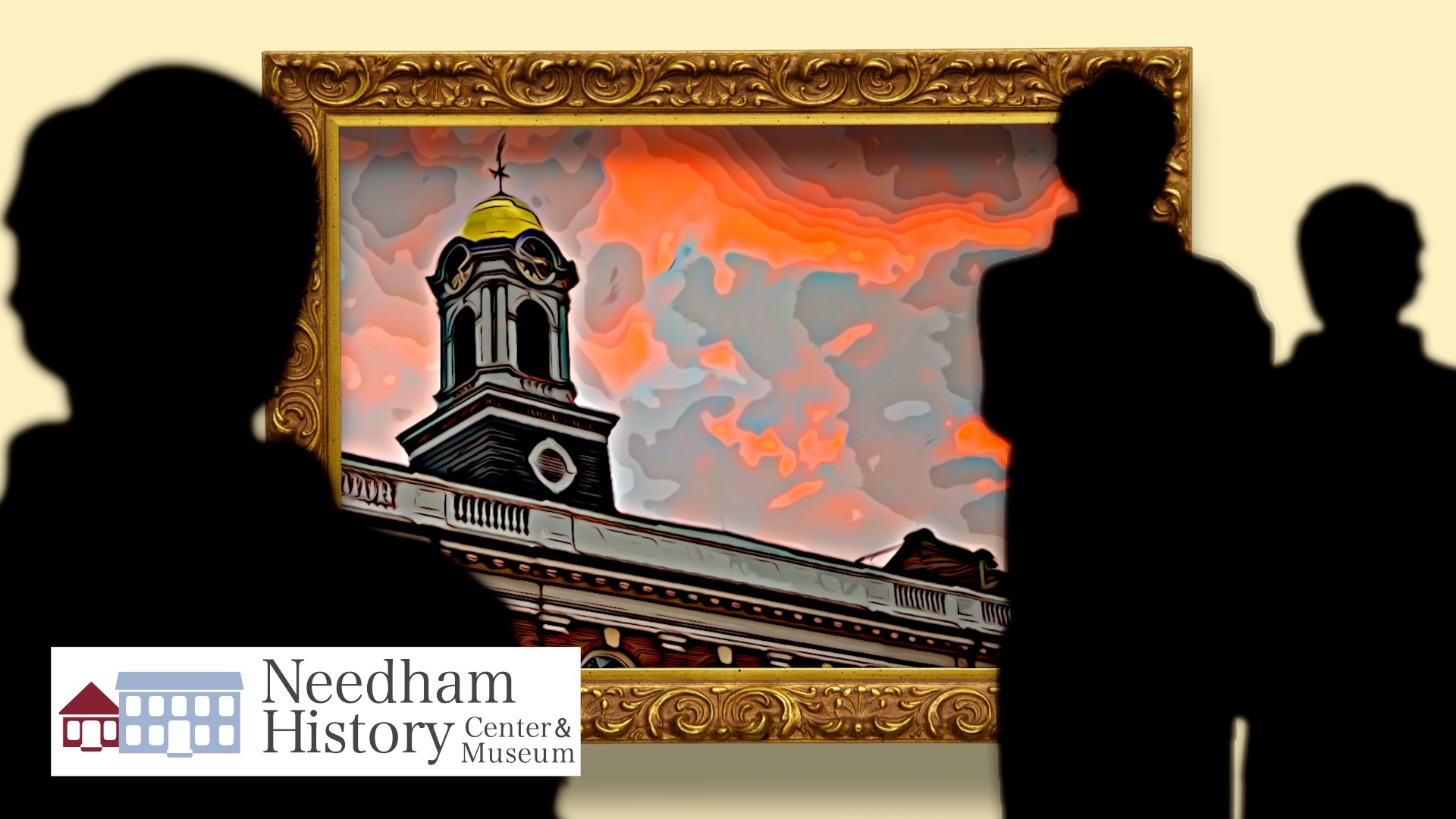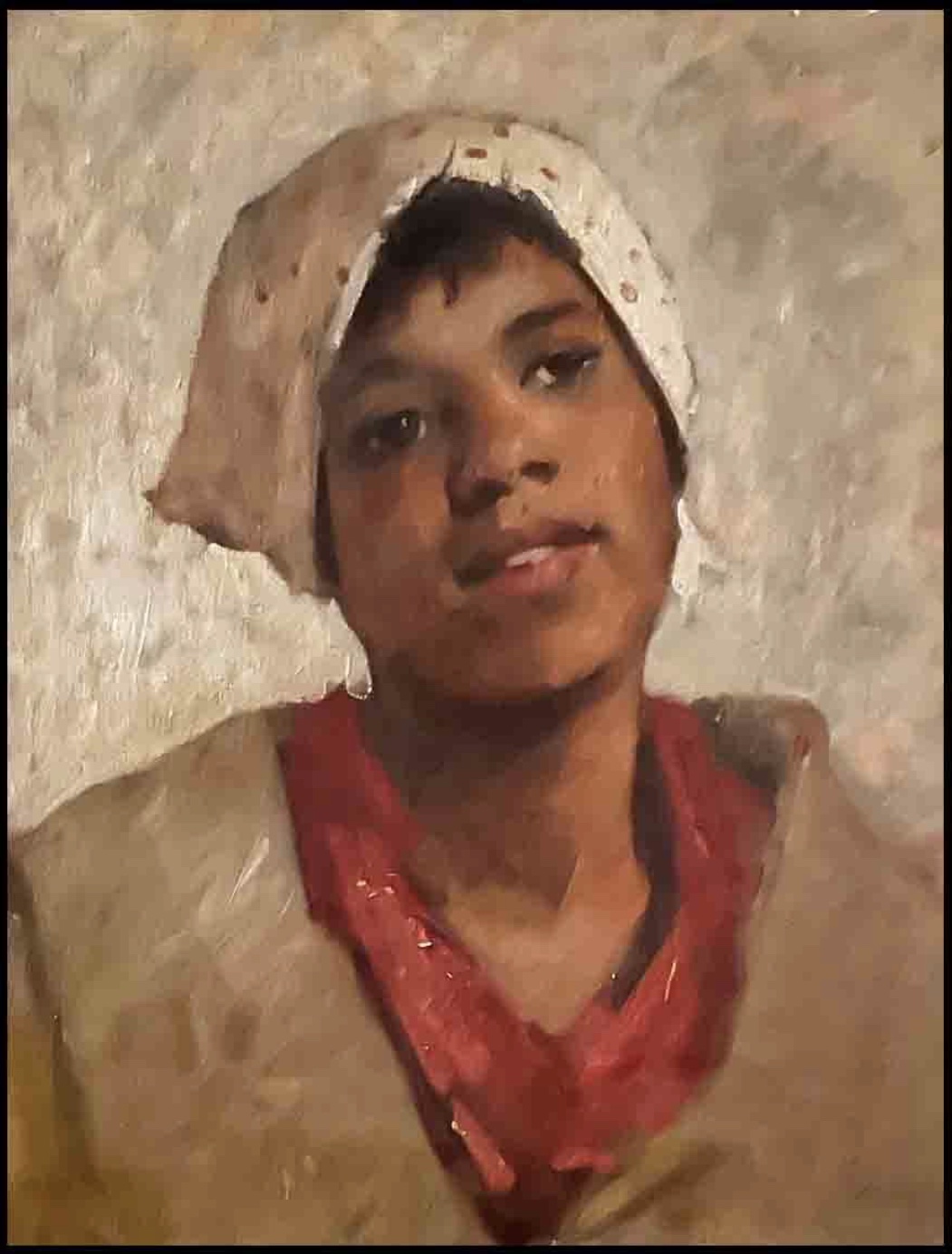
Needham History: Helen M. Knowlton
Three mysterious unknown women

Title unknown (“Woman with White Kerchief”), by Helen M. Knowlton, circa 1900. Painting in the collections of the Needham History Center.
Helen M.Knowlton
For a fairly small town, Needham has had its share of talented artists. Alvan Fisher (1792- 1863) was born in Needham, and is famous as an early example of the Hudson River School. NC Wyeth (1882-1945), of course, was born in Needham and became the most famous illustrator of his day, and also nurtured a lineage of famous artists. Wyeth and Fisher are the best-known, but Needham has also had many skilled amateurs – Timothy Newell Smith (1817-1893), who painted scenes of town; Timothy Otis Fuller (his nephew, whom he trained), who illustrated his ornithology diaries with exquisite little watercolors. Innumerable women, who did not consider themselves artists, created masterpieces of embroidery and beading to decorate their homes and accessories. And even a cursory glance at the gallery shows of the Needham Art Association, the Gorse Mills Studios, and the annual Open Studios reveals how blessed Needham is with artistic talent.
The Needham History Center has a gallery of works by Needham artists and artisans, and in the course of renewing and refreshing our displays, we have installed even more. Among these are three portraits by Helen Mary Knowlton.
Helen Knowlton was born in Littleton, MA in 1832. Her family moved to Worcester a couple of years later, where her father owned and ran a newspaper, the Worcester Palladium. She and her sisters were raised and educated in Worcester. When their father died in 1871, the three women took over the Palladium and ran it themselves for a few years.
Helen Knowlton began her study of art in Worcester, and in 1867, she moved to Boston and set up her own studio. A year later, she convinced the artist William Morris Hunt to offer classes for women. Hunt had studied under Jean-François Millet in Paris, and became an influential teacher himself upon his return to New England. In addition to painting, he was a sculptor and lithographer. In Boston, he was one of a circle of prominent artist and writers. His work is represented in most of the major American art museums. Although his colleagues ridiculed him for wasting his time teaching women, Hunt was apparently a generous and inspired teacher who fostered the careers of several women artists.
Knowlton became one of Hunt’s most devoted students, and eventually took over teaching his classes and methods. She was also his principal biographer, writing three books about his life, artwork, and teaching techniques. After his death in 1878, she arranged the first retrospective of his work for the Museum of Fine Arts in Boston. She continued her role as teacher, maintaining the circle of female artists that had started out with her, and taking on new students to continue the work.
In the early 1880s, Knowlton moved to Germany for a few years to study there. At that time, she also shifted her work from primarily landscapes to portraiture. Her first portrait was of William Morris Hunt, painted in 1880, two years after his death. The portrait was exhibited at the Boston MFA, and was acquired in 1896 by the Worcester Museum of Art – the first collections acquisition made by the new museum. In the 1890s she again made use of her writing and journalism experience to become the art critic for the Boston Post. She continued to write, paint, and teach well into her 70s.
Sometime around the turn of the century, Helen Knowlton moved to Needham, and lived with her sisters Lucy and Francis in a house on Pickering Place. The women supported themselves by giving art and music lessons. Helen also participated in events with the local professional and amateur arts community, exhibiting her work in exhibits and offering an extensive solo show to celebrate the opening of the new Needham High School (Emery Grover Building) in 1898. She died in Needham in 1918 at the age of 85, and was buried in Worcester.
The Needham History Center has three portraits by Helen Knowlton, all of which are currently on exhibit. All three are images of women and were probably done around 1900. One is a large picture in pastels of a blond woman seen from behind, her head only slightly turned to show the curve of her cheek. One is a smaller picture in oils in a more formal style, the profile of a woman with bright red hair. The third is a full-face portrait of a Black woman, with a red bandana around her neck and a white kerchief covering her hair. This pose is the most natural of the three, and the style is looser and more impressionistic than the others. None are identified, so we do not know who the women were, or how they came to have their portraits painted. They are, however, among our finest works.
The Needham History Center’s ongoing exhibit of Needham artists displays works dating from the early 19th century to today, and includes the work of the artists mentioned above. Forgive the scruffy iPhone photos – they are much better in real life. For the museum schedule, see our website at needhamhistory.org/visit-rent/plan-your-visit/
Title unknown (“Woman with Red Hair”), by Helen M. Knowlton, circa 1900. Painting in the collections of the Needham History Center.

 |
Gloria Polizzotti Greis is the Executive Director of the Needham History Center & Museum. For more information, please see their website at www.needhamhistory.org. |

